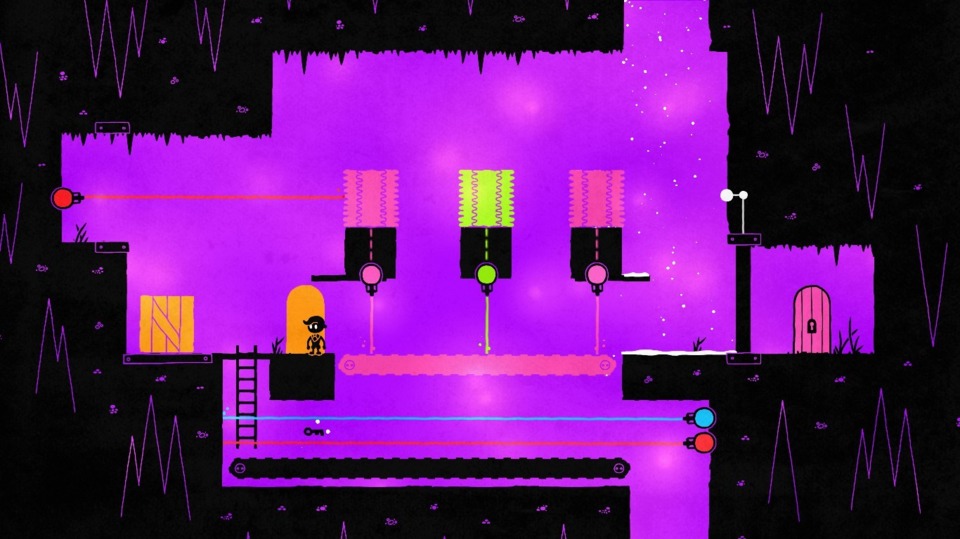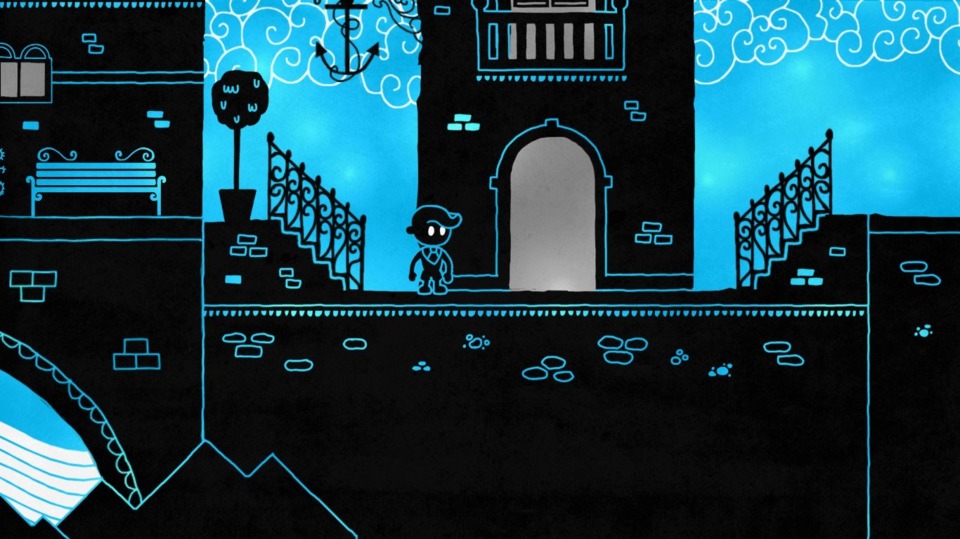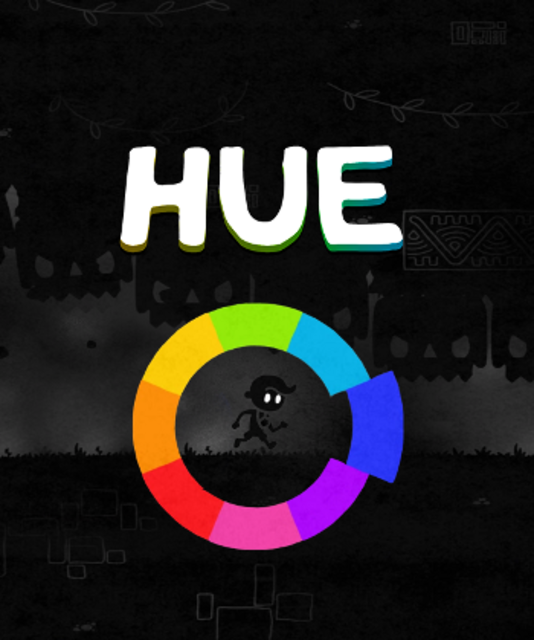
The puzzle-platformer, though a rare genre before the '00s, has become something like the default Indie game over the years. I've no idea if there's copious amounts of tutorials for GameMaker and Unity out there for budding developers that begin and end with a 2D screen full of platforms and switches, or if everyone decided they wanted to make the next Braid, but it feels like I see more of these than any other genre when browsing my Steam library for likely IGotW candidates. Not that I'm necessarily complaining, mind: I already love platformers and giving them a cerebral edge doesn't compromise them as I see it.
Hue's big focus is on colors, creating its puzzle scenarios with a color-switching mechanic in mind. The foundation of this feature is that the player can change the background color of the level at any time, slowing down the action to a crawl to pick their preferred color from a wheel (see left), and any foreground objects of the same color will blend into the background and vanish. Have a red block in your path? Switch the world's color to red and the block disappears chameleon-like into the background, letting you pass. Conversely, if you can't see a way across a gap, it's probably because you've inadvertently made the bridge intangible with your current palette. These puzzles start with simple moving platforms and pushable boxes but quickly start introducing color-specific traps like laserbeams and rolling boulders and crumbling floors. It's just as often a "sit back and think about a plan of action" contemplative type of puzzle-platformer as it is a "gotta do everything quickly and in the right order" mad panic reflex-intensive type. Fortunately, it's kind enough to start you slow, giving you only a color or two to worry about before gradually adding more to your plate and more sophisticated multi-layered puzzle rooms that incorporate them.

The Braid allusions are a little more overt with the game's voice-overs, where a calm female voice waxes lyrical about the nature of color and of sight and of the not-always complementary responses to our shared realities (the old "is your blue the same as my blue?" koans, in other words). In this world color did not exist until it was discovered by scientists, and the academic world was torn apart by what this breakthrough might mean, and the resulting kerfuffle ended up separating you from your parent - hence the game's journey to retrace her steps, her discoveries into the world of colors and tones, all the way to her current location. It's all a bit ambiguous and a little on the drone-y side, and it doesn't help that each of these voice-overs are delivered in giant empty rooms designed to give you some basic jumping and climbing to do while the minutes-long messages play out in full. When you revisit the same areas for missed collectibles - many of which are initially locked behind colored walls you cannot possibly remove yet, due to lacking the color in question the first time around - the dull hollowness of these empty rooms become all the more apparent sans the voice-over. It's a game that feels like it has more to say than it actually does, and perhaps felt too indebted to the format of Braid to avoid falling into the same pitfalls of verbose pretension.
In all fairness though, the puzzles themselves are smartly designed. One clever little factor that was almost present throughout the game was that, while the option to restart a puzzle room existed, there was never a reason to do so. The screens were designed in such a way that you could always fix a mistake without having to kill yourself or restart from the menu (either just resets the immediate area) just by switching back to the right color or moving a box or platform back to where it was. The game managed to maintain this surprising lack of any kind of stalemate situation right up until the last couple of rooms - it's possible that others exist and I just avoided them, perhaps by not taking actions that I knew were incorrect, but to get 90% the way through the game with such an impressive track record just to fall at the last hurdle is a little disappointing. On the whole, though, the game's puzzles were challenging without being overly so, and the only times where I was really tripping up was when my framerate started tanking in some of the larger rooms with more frantic action afoot (the blame for which I place entirely on my own system, as the game's requirements are far from demanding).

I sound a little down on Hue, but I don't mean to be. It has an elegant professionalism to its core design - see the above paragraph about how well most of the rooms are designed - that can't easily be substantiated in text without a whole bunch of visual references. I also appreciated its gradual difficulty curve, its sparse but well-hidden collectibles, and a vaguely "Game and Watch" art style that doesn't quite do the "projected LEDs on a static background image" thing to make its active elements stand out but still does an effective job contrasting the eight colors you can use with the hard black of the level geometry and background details like furnishings and plants. Most important is that the game always felt fair: there was never a situation where I got stuck for a while because I felt like I was missing some important mechanic that hadn't been visually demonstrated beforehand, nor were there any more action-y sequences that demanded timing that was too strict (the slow-down while picking your next color helped out with these timed sequences considerably). Some rooms were a little bigger than they needed to be, especially since there are no checkpoints beyond the last door you entered, but on the whole Hue struck me as a very competently balanced and considered game.
Rating: 4 out of 5.
| < Back to 141: Oknytt | The First 100 | > Forward to 143: Mr. Robot |

Log in to comment